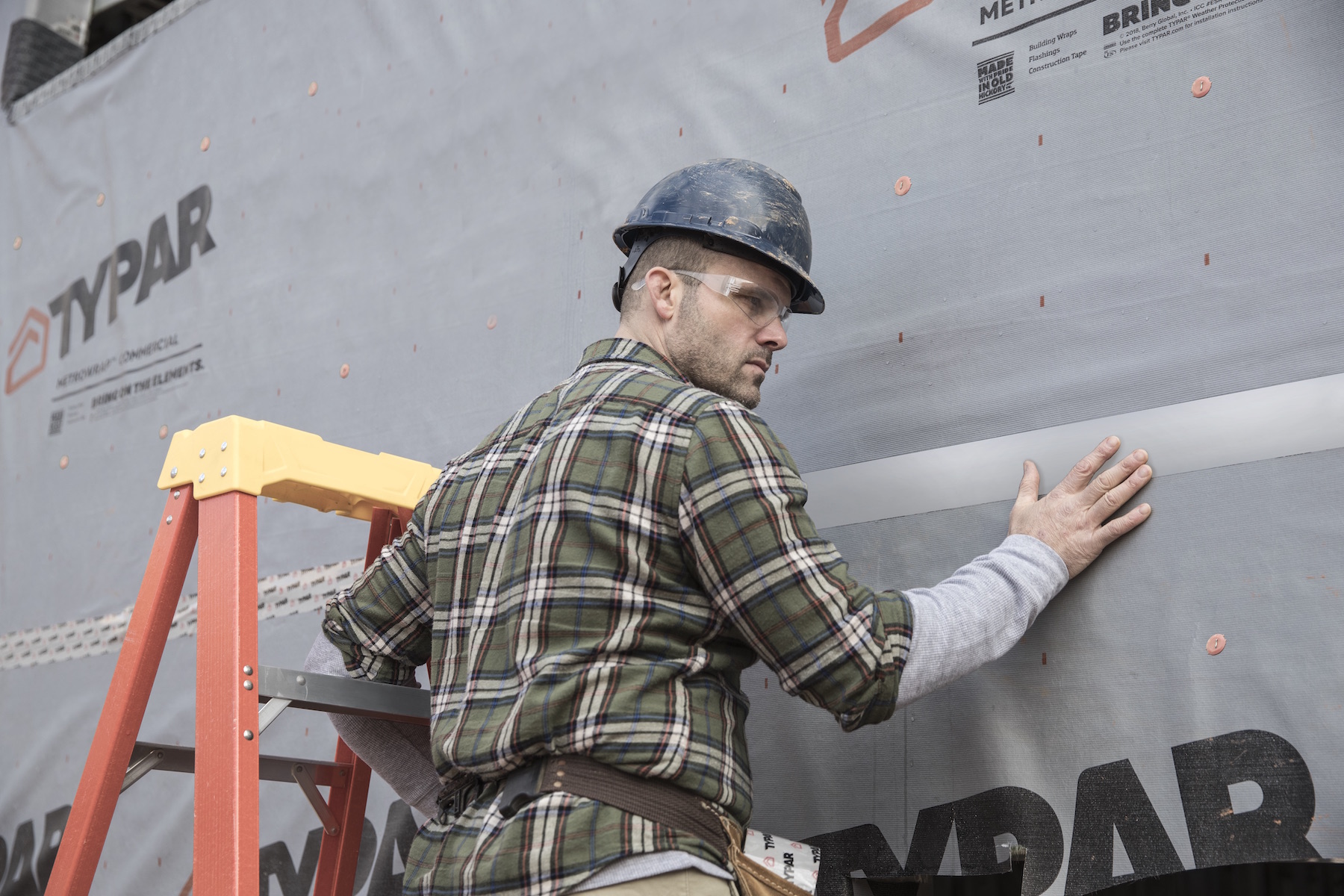Some research estimates the average, single-family home produces 3-6 gallons of moisture daily through normal activities like cooking, showering, and washing and drying clothes. In the past, this wasn’t a major issue as escaping heat energy carried accumulated moisture with it. However, as construction techniques have led to tighter homes, there is less heat loss, which means reduced rates of moisture being allowed to move from the home. This is a critical component of home design as dangers of prolonged moisture levels can lead to mold growth, structure dry rot and exterior/interior paint failure. This is an area where a high-performance house wrap can play a critical role by having an optimal moisture vapor transmission.
Building Wrap and Permeability
The hidden science of a house wrap lies within its ability to allow free passage of water vapor so that wall cavities and framing members can dry to the outside of the building, thereby reducing the threat of mold and rot. The rate at which the moisture vapor moves through an object is measured in perms, and is often referred to as permeability. Unlike bulk water holdout, which refers to water in its liquid form, vapor permeability concerns water in its gas form.
Current building codes require a house wrap to match or exceed Grade D building paper’s rating of about 5.0 perms. To meet this requirement, perm ratings for commercially available house wraps range from 7 to 59 perms.
Materials with higher perm ratings essentially speed the escape of trapped moisture vapor. But higher ratings do not necessarily equal better house wraps, as methods of achieving a high perm rating can vary. For example, some low-tech house wraps achieve their high perm ratings with mechanically punched perforations in the membrane. These perforations increase the passage of water vapor, but they also make the house wrap more susceptible to bulk water intrusion. Conversely, non-perforated house wraps offer even greater moisture vapor transmission (higher perms) than their perforated counterparts and are more effective at preventing the movement of bulk water.
The Sweet Spot for Permeability
In his paper, “Inward Drive – Outward Drying,” building scientist Joseph Lstiburek identifies the “sweet spot” for the permeance of the house wrap layer as between 10 and 20 perms. Too high, he writes, and the moisture driven out of the back side of reservoir cladding (i.e. vinyl, stucco, etc.) into the air space will blow through the layer, through the permeable sheathing and into the wall cavity. Too low, and the outward drying potential of the cavity is compromised. Thankfully, advances in building wrap technology are adapting to meet this need.
A research study conducted by the University of Massachusetts, in which various house wrap products were subject to a set of laboratory conditions to identify how they compared from a permeability standpoint, found TYPAR® BuildingWrap™ to be one of the best house wraps on the market, for both resisting water infiltration and permitting the evaporation of water vapor.
The water holdout of TYPAR BuildingWrap is balanced, achieving a perm rating of 11.7. This optimal perm rating ensures that while water is prevented from entering the wall cavity, ideal levels of moisture vapor are allowed to escape. For more information, visit www.typar.com.




